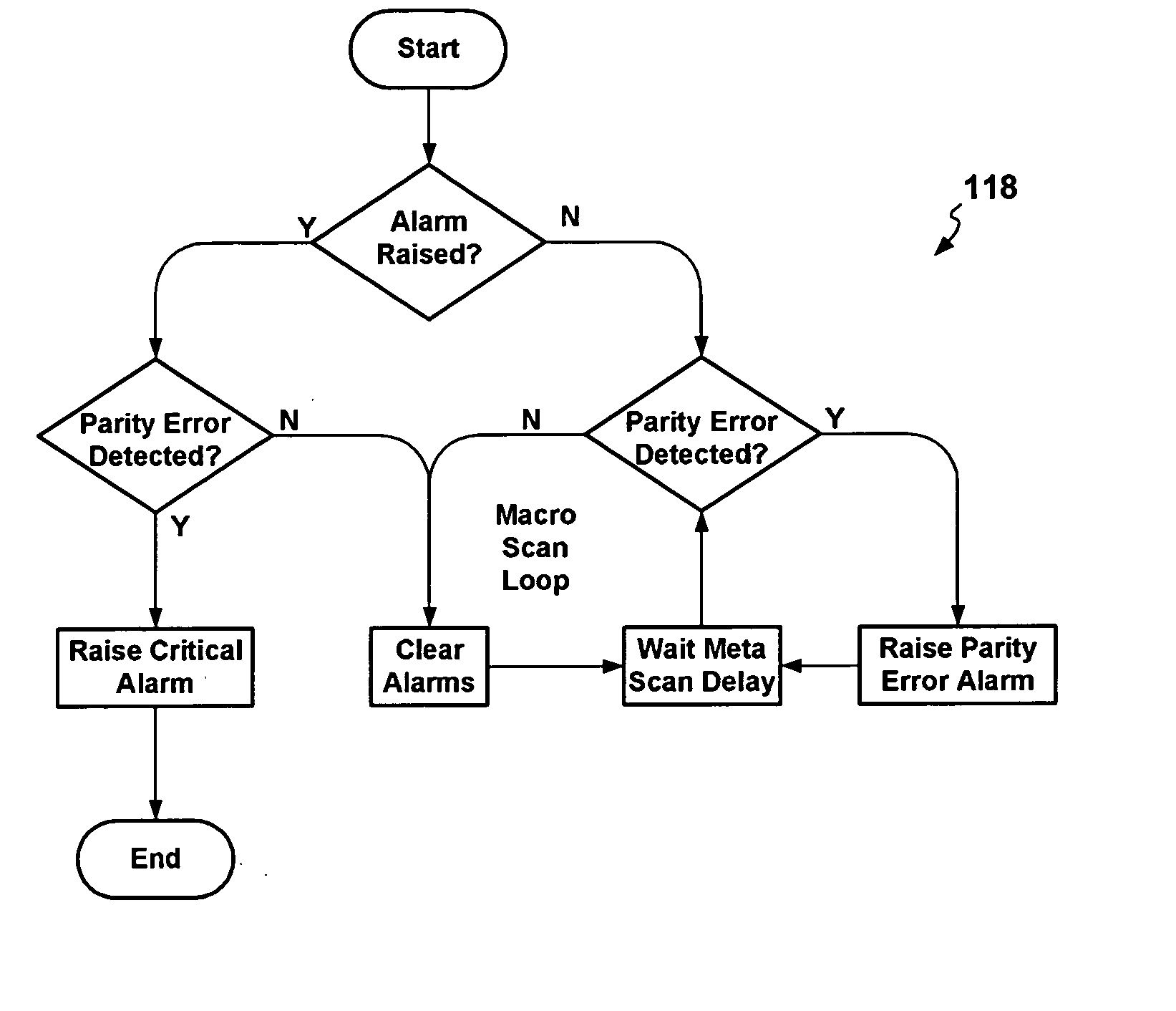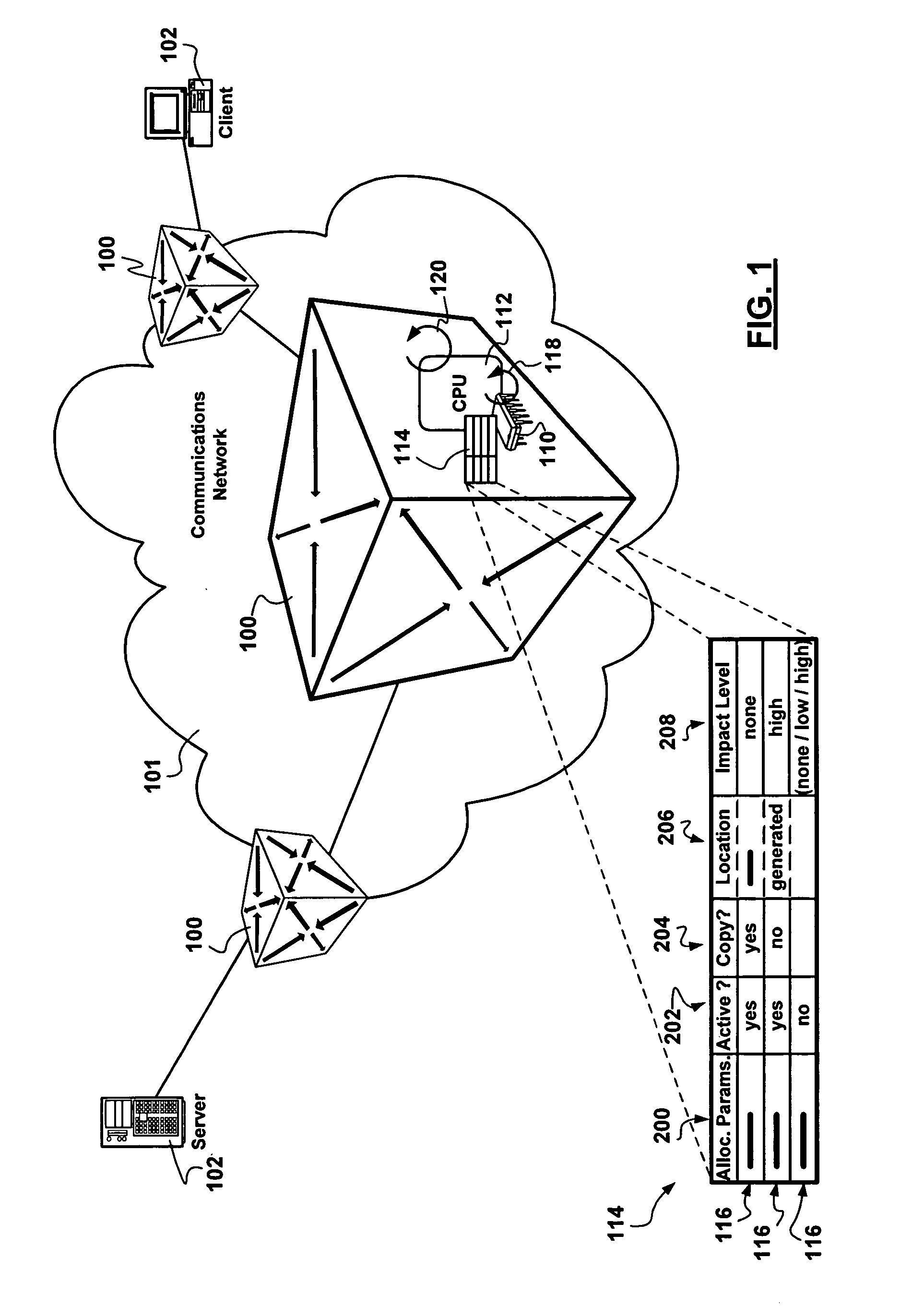Autonomous method and apparatus for mitigating soft-errors in integrated circuit memory storage devices at run-time
a memory storage device and run-time mitigation technology, applied in error detection/correction, instruments, computing, etc., can solve the problems of radioactive inert materials used in and about the integrated circuit memory storage device, service affecting problems, and soft-errors due to alpha-particle discharge events can be greatly limited, so as to reduce the impact, reduce the impact, and reduce the effect of soft-errors
- Summary
- Abstract
- Description
- Claims
- Application Information
AI Technical Summary
Benefits of technology
Problems solved by technology
Method used
Image
Examples
Embodiment Construction
[0027] There is a growing need to identify and to correct soft-errors in a manner that is non-service-affecting during the operation of integrated circuit memory storage devices affected by soft-errors. This need has only recently been felt, perhaps in the last one or two years, as recent improvements have led to significant reductions in hard-errors resulting from design flaws and manufacturing defects, thereby exposing chance soft-error instances as the origins and as the effects of soft-errors have become better understood.
[0028] In view of the above, parity checking techniques are being proposed to employ parity error detection in order to identify and address soft-errors experienced by integrated circuit memory storage devices.
[0029] Field testing has shown that there is statistical evidence to conclude that the majority of parity errors, between 60 to 70%, affecting deployed telecommunications equipment are due to soft-errors typically occurring in inactive memory storage re...
PUM
 Login to View More
Login to View More Abstract
Description
Claims
Application Information
 Login to View More
Login to View More - R&D
- Intellectual Property
- Life Sciences
- Materials
- Tech Scout
- Unparalleled Data Quality
- Higher Quality Content
- 60% Fewer Hallucinations
Browse by: Latest US Patents, China's latest patents, Technical Efficacy Thesaurus, Application Domain, Technology Topic, Popular Technical Reports.
© 2025 PatSnap. All rights reserved.Legal|Privacy policy|Modern Slavery Act Transparency Statement|Sitemap|About US| Contact US: help@patsnap.com



